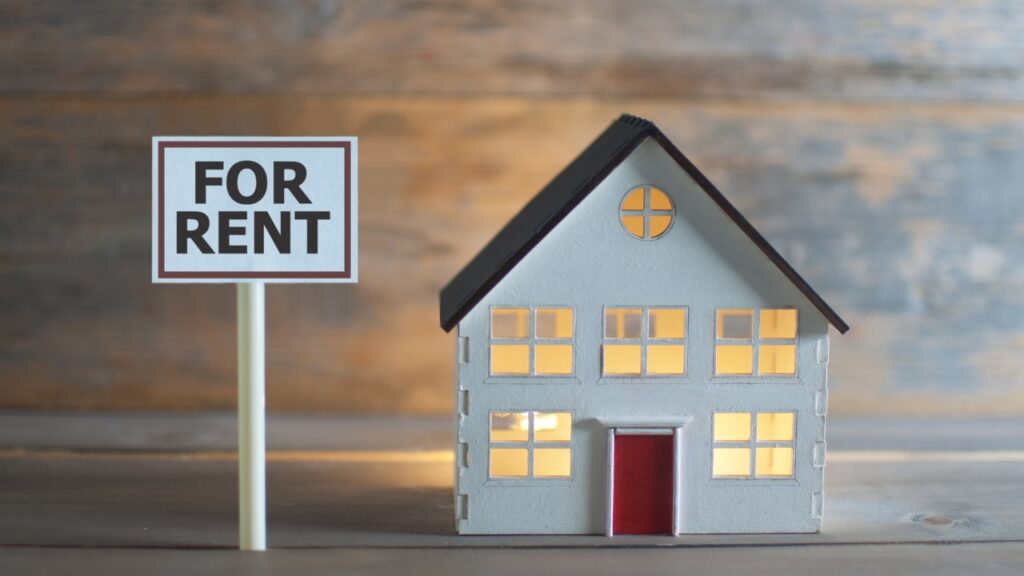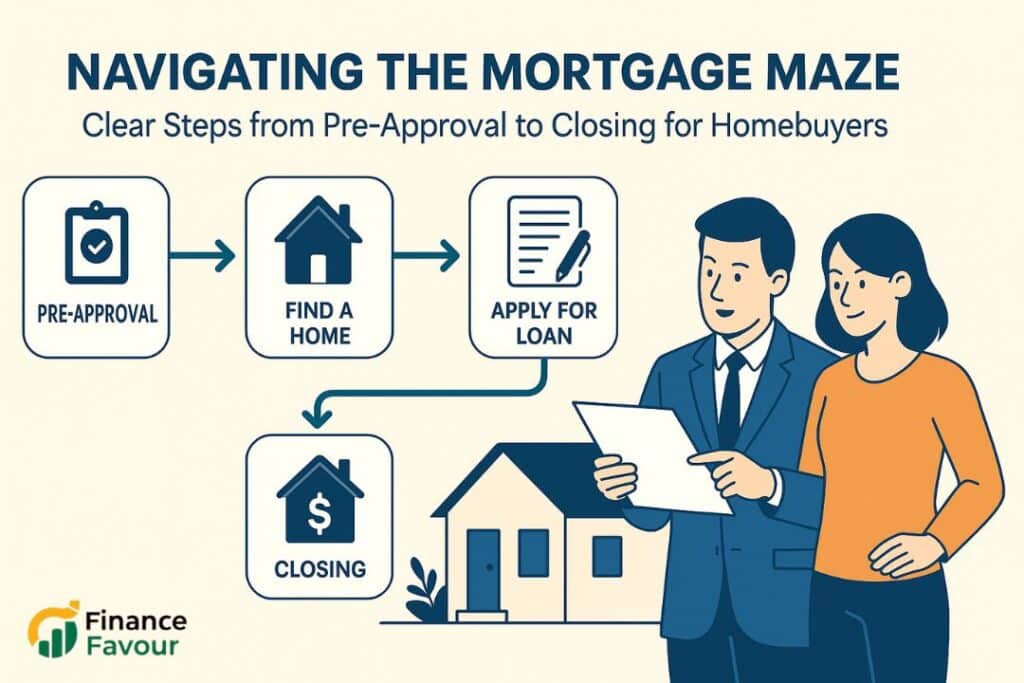Introduction
Real estate is an ever-evolving game, and right now, one trend is stealing the spotlight: Build-to-Rent (BTR). Forget flipping houses or chasing down single-unit rentals. Investors, developers, and even institutional giants are going all-in on BTR. Why? Because it’s changing the way we think about rental housing—and it’s doing it fast.
As affordability crises hit major metros and millennials delay homeownership, the rental demand keeps surging. Enter BTR: purpose-built rental communities offering the privacy of standalone homes with the perks of multifamily management. It’s the perfect fusion of flexibility for renters and predictability for investors.
But this isn’t just a flash-in-the-pan trend. The numbers back it up. Billions are flowing into BTR developments across the U.S. and beyond. Whether you’re an investor, developer, or curious renter, understanding this model could reshape your perspective—and your strategy—in real estate.
What is Build-to-Rent?
At its core, Build-to-Rent refers to residential communities designed specifically for rental purposes, not for sale. Instead of building homes to sell off one by one, developers construct entire neighborhoods—single-family homes, townhomes, or duplexes—that are meant to be leased out and held as income-generating assets.
Here’s how BTR stands out:
- Purpose-built: Designed with renters in mind from day one.
- Professionally managed: Think on-site maintenance, leasing staff, and shared amenities.
- Community-oriented: Often includes parks, dog runs, and shared spaces like fitness centers.
Unlike traditional single-family rentals, which are scattered and individually owned, BTR developments offer a cohesive, scalable, and consistent living experience—much like an apartment complex, but with more space and privacy.
This model aligns perfectly with modern renter desires: low-maintenance living, flexibility, and community features without the burden of homeownership.
The Evolution of the Build-to-Rent Market
The concept of renting single-family homes isn’t new, but institutionalizing it as an investment model is. The seeds of BTR were planted after the 2008 housing crash, when foreclosed homes became rental goldmines. As hedge funds and REITs capitalized on that market, they realized the power of scale—and the limitations of scattered site portfolios.
Thus began the rise of purpose-built rental communities. Initially limited to suburban Sun Belt markets, the trend exploded in places like Phoenix, Dallas, and Atlanta. Over time, the success of these early models proved that renters were eager for more space without the mortgage, and investors were hungry for stable yields.
Fast forward to today: BTR is no longer a niche concept. It’s a core pillar in many real estate portfolios and a strategic response to generational shifts in housing demand.
Why BTR is Gaining Momentum
Several macro and microeconomic trends have propelled BTR into the real estate spotlight:
1. Housing Shortages
Homebuilders can’t keep up with demand, and affordability remains a huge barrier to homeownership. BTR fills the gap by offering quality housing with fewer upfront costs for tenants.
2. Changing Lifestyles
Millennials and Gen Z value flexibility. They want space, privacy, and modern amenities—but without the financial burden of buying. BTR offers just that.
3. Institutional Investment
Wall Street has taken notice. Big players like Blackstone, Invitation Homes, and Greystar are pouring billions into BTR projects. Why? Because they offer long-term, stable income and are more recession-resistant than other asset classes.
4. Shift Toward Suburban Living
COVID reshaped living preferences. People fled dense urban areas for the suburbs. BTR communities, often built on city outskirts, are perfectly positioned to meet this demand.
These trends create the perfect storm for BTR: a housing need that investors can scale profitably.
Advantages of Build-to-Rent for Investors
BTR isn’t just good for renters—it’s a dream for investors too. Here’s why savvy money is moving toward this model:
1. Reliable Cash Flow
With entire communities leased out, BTR projects generate consistent rental income, reducing vacancy risks. Plus, professional property management ensures high retention and tenant satisfaction.
2. Scalability
Owning 100 units in one place is much easier to manage than 100 scattered rentals. BTR provides economies of scale in construction, maintenance, and management.
3. Higher ROI Potential
These properties often rent for more than equivalent apartments because they offer more space and privacy. Combined with lower turnover and maintenance efficiencies, the returns can be impressive.
4. Long-Term Asset Appreciation
Land in growing suburbs is appreciating fast. BTR allows investors to ride the wave while collecting rent in the meantime.
5. Strong Exit Options
Whether holding long-term or selling to institutional buyers, BTR communities hold strong appeal due to their built-in cash flow and predictable performance.
Benefits of BTR for Renters
While the BTR model is clearly investor-friendly, it’s also a game-changer for renters—especially those craving the comforts of a single-family home without the commitment of ownership. Here’s how renters benefit from this modern housing model:
1. More Living Space
Unlike apartments, BTR homes are typically detached or semi-detached units. That means renters enjoy more square footage, private yards, and even garages—features rarely found in traditional rental properties.
2. Modern Amenities
Many BTR communities come loaded with upscale amenities such as:
- Community pools
- Fitness centers
- Walking trails
- Dog parks
- Clubhouses and co-working spaces
These perks rival or surpass what you’d find in high-end multifamily developments.
3. Professional Property Management
Forget dealing with a private landlord who’s slow to respond or inconsistent with maintenance. BTR communities are typically managed by professional firms, ensuring faster service, clear communication, and tenant-friendly policies.
4. Flexibility Without Sacrifice
BTR allows renters to enjoy the benefits of a suburban lifestyle—space, community, peace—without locking themselves into a 30-year mortgage. It’s the best of both worlds: home-like living with rental flexibility.
5. Predictable Costs
Leasing in a BTR community often includes built-in services and stable pricing structures. Renters may also have access to bundled utilities, landscaping services, and smart home technology—all included in the rent.
This blend of quality, comfort, and convenience is why so many renters are saying goodbye to traditional apartments and hello to BTR homes.
Financial Structure of BTR Projects
Behind the scenes, the financial engine of a BTR project is complex—but powerful. For developers and investors, understanding the economics is key to seeing why these communities are such hot commodities.
1. Upfront Capital Requirements
BTR developments require significant upfront capital to acquire land, design, and build entire neighborhoods. Costs include:
- Land acquisition and prep
- Construction of homes and infrastructure
- Community amenities
- Marketing and lease-up campaigns
Larger projects may require $10M to $100M+ in capital, depending on scale and location.
2. Funding Sources
Common funding sources for BTR include:
- Private equity
- Joint ventures
- Institutional investors (e.g., REITs)
- Construction loans
- Crowdfunding platforms (for smaller-scale developers)
3. Rental Income as Revenue Driver
Once units are leased, steady rental income becomes the primary revenue stream. Net operating income (NOI) is driven by occupancy rates, rental pricing, and operating efficiencies.
4. Long-Term Profitability
The real financial power comes in holding these assets long-term:
- Rental increases build cash flow
- Property appreciation increases asset value
- Stable occupancy enhances investment credibility
5. Exit Strategies
Developers and investors may choose to:
- Refinance and hold
- Sell to REITs or institutional buyers
- Bundle multiple communities into a portfolio sale
BTR is designed to be a long-term cash-generating machine—one that’s relatively low-risk compared to other real estate strategies.
Build-to-Rent vs Multifamily Developments
While both BTR and multifamily developments serve the rental market, they operate under different models with unique advantages and challenges. Understanding these differences can help investors choose the right approach for their goals.
1. Ownership Structure
- BTR: Individual units are detached or semi-detached homes, often in a suburban layout.
- Multifamily: Units are in a single building or high-density complex.
2. Renter Appeal
- BTR: Appeals to families, remote workers, and those looking for more privacy.
- Multifamily: Attracts singles, students, and urban dwellers who prefer city life.
3. Operational Complexity
- BTR: Requires more land and infrastructure, but offers scalability and fewer common area headaches.
- Multifamily: Easier to maintain from a centralized perspective but may face higher tenant turnover.
4. Investment Dynamics
- BTR: Higher construction costs but potentially higher rents and lower turnover.
- Multifamily: Lower per-unit build cost, higher density, faster lease-up.
Each model has its place. BTR thrives in suburban or secondary markets, while multifamily dominates urban centers. Smart investors evaluate both to create a balanced portfolio.
BTR Development Models
Build-to-Rent isn’t one-size-fits-all. Developers can tailor their projects based on land availability, local demand, and investment strategy. Here are the most common BTR development formats:
1. Single-Family Communities
The most traditional BTR model: standalone homes in a cohesive neighborhood. These communities often feature:
- Fenced yards
- Driveways and garages
- Wide streets and green spaces
Ideal for families and long-term renters, they mirror the feel of a typical suburban development.
2. Townhomes and Duplexes
Higher density, lower cost per unit. Townhomes and duplexes offer a middle ground:
- More efficient land use
- Lower build cost than detached homes
- Still provide private entrances and shared walls
Perfect for areas where land is more expensive or zoning is more restrictive.
3. Mixed-Use BTR Communities
These blend residential with retail and office space. Think: homes plus coffee shops, gyms, and co-working spaces. It creates a lifestyle-focused ecosystem:
- Built-in amenities and convenience
- Walkability and community engagement
- Appeals to urban-suburban hybrid demographics
Developers who want to create a live-work-play environment often gravitate toward this model.
These flexible formats give investors and developers multiple ways to capitalize on the growing demand for quality rental housing.
Challenges of the Build-to-Rent Model
While BTR has a lot going for it, the road to successful development and long-term profitability isn’t without obstacles. Understanding the challenges can help developers and investors prepare accordingly and avoid costly missteps.
1. Zoning and Land Use Restrictions
Many municipalities still have zoning laws that favor owner-occupied developments or multifamily housing. BTR projects may run into:
- Opposition from local residents (NIMBYism)
- Lengthy approval processes
- Density and layout restrictions
Securing land zoned for BTR-friendly use is one of the biggest barriers to entry.
2. Construction and Labor Shortages
The real estate industry is grappling with a shortage of skilled labor and rising construction costs. BTR projects, especially those requiring hundreds of units, can be delayed or over budget due to:
- Lack of qualified contractors
- Increased wages
- Long lead times for materials
These delays directly impact ROI and investor confidence.
3. Rising Material Costs
Lumber, steel, and other essential materials have experienced significant price volatility in recent years. Developers must factor in:
- Contingency budgets
- Locking in material costs early
- Streamlined supply chain logistics
4. Property Management Complexity
Managing a neighborhood of individual homes is different from managing an apartment building. Even with centralized systems, there are more maintenance requests, landscaping needs, and scattered tenants.
Effective property management is crucial to maintaining tenant satisfaction and preserving the long-term value of the community.
5. Market Saturation in Certain Areas
As BTR becomes more popular, some markets are starting to experience oversupply. Investors must:
- Conduct detailed market research
- Analyze demand forecasts
- Avoid markets where competition drives down rents
Challenges aside, most can be mitigated with the right team, strategic planning, and adaptive business models.
Where BTR is Booming
Not all markets are equally ripe for BTR development. Certain cities and regions have become BTR hotspots due to a combination of population growth, housing shortages, and lifestyle shifts.
1. Sun Belt Cities
States like Texas, Arizona, Florida, and Georgia are leading the charge. Cities such as:
- Phoenix
- Dallas-Fort Worth
- Tampa
- Atlanta
These areas offer large tracts of land, a growing renter population, and favorable weather for year-round construction.
2. Suburban Growth Areas
As remote work continues and families look for space outside dense urban cores, suburban markets with easy city access have become prime locations for BTR. Think:
- Charlotte suburbs
- Denver exurbs
- Nashville metro outskirts
3. Secondary and Tertiary Markets
Smaller cities and regional hubs are attracting developers thanks to:
- Lower land costs
- Less zoning resistance
- Strong rental demand
Places like Boise, Spokane, and Huntsville are seeing major BTR investments.
4. International Growth
BTR isn’t just an American phenomenon. The U.K. and Australia are also seeing significant development in this space, with investors targeting urban peripheries and growing suburbs.
By identifying high-growth markets early, investors can lock in favorable land deals and enjoy long-term rental income with less competition.
How Institutional Investors are Driving BTR Growth
Perhaps the clearest sign that BTR is no passing trend is the influx of institutional capital flooding the space. Major financial players see the long-term stability and scalability of this model—and they’re betting big.
1. Private Equity Funds
Firms like Blackstone, KKR, and Brookfield are allocating billions toward BTR developments. They’re partnering with experienced developers or acquiring existing communities to build massive rental portfolios.
2. Real Estate Investment Trusts (REITs)
Publicly traded REITs are getting in on the action too. Companies like Invitation Homes and American Homes 4 Rent are actively expanding their BTR holdings, providing retail investors exposure to the trend.
3. Joint Ventures
Institutional investors often collaborate with builders and landowners to share risk and accelerate development. These partnerships combine:
- Development expertise
- Capital backing
- Operational efficiency
4. New BTR-Specific Platforms
Some firms are forming entirely new brands focused solely on BTR. These platforms are vertically integrated, handling everything from land acquisition to leasing and management.
This institutional involvement boosts credibility and brings professional oversight, ensuring BTR evolves as a sustainable asset class rather than a temporary trend.
Steps to Launch a BTR Project
Interested in diving into the BTR space? Whether you’re a developer or investor, the process requires a clear roadmap and significant upfront planning. Here are the key steps to launching a successful BTR community:
1. Land Acquisition
Start with a location that offers:
- Affordable land
- Favorable zoning laws
- Strong rental demand
Research local demographics, job growth, and transportation access before committing.
2. Planning and Design
Work with architects and planners to create a layout that balances density, comfort, and community feel. Include:
- Diverse unit sizes
- Shared amenities
- Parking and green spaces
3. Securing Financing
Explore funding sources such as:
- Private equity
- Construction loans
- Syndication or crowdfunding
Build a detailed pro forma showing expected costs, rent revenue, and timelines.
4. Construction Phase
Partner with experienced contractors and vendors. Establish a schedule and budget controls to minimize delays and cost overruns.
5. Marketing and Lease-Up
As units near completion, ramp up marketing. Use digital tools, real estate agents, and leasing agents to reach prospective tenants.
6. Long-Term Management
Hire or create a property management team to oversee maintenance, renewals, and tenant relations. Technology platforms can streamline this process.
Launching a BTR project requires expertise across land use, finance, design, and operations—but the payoff can be immense if executed well.
The Future of Build-to-Rent
Build-to-Rent has firmly planted its roots in today’s real estate landscape—and the outlook for its growth remains strong. As societal, economic, and demographic shifts continue to reshape housing demand, BTR is poised to meet the moment.
1. Long-Term Viability
BTR isn’t just thriving in hot markets—it’s proving resilient even in economic uncertainty. The demand for quality rental homes persists as affordability challenges push homeownership further out of reach for many.
Younger generations, now accustomed to renting, are showing no rush to buy. They prioritize flexibility and lifestyle over long-term commitments. BTR aligns perfectly with these values.
2. Technological Integration
Tech is playing a huge role in the scalability and sustainability of BTR communities:
- Smart home tech: Tenants expect keyless entry, app-controlled thermostats, and smart appliances.
- Automated management tools: Property managers use AI and cloud platforms to streamline leasing, maintenance, and rent collection.
- Virtual leasing tools: Online tours, applications, and digital signatures have become standard.
This integration reduces operational costs and enhances tenant experience—making BTR an even more attractive model.
3. ESG and Sustainability Trends
As environmental, social, and governance (ESG) standards influence real estate, BTR developers are focusing more on sustainable building practices, energy-efficient designs, and community-focused living environments.
Expect to see:
- Solar integration
- Water-saving fixtures
- Shared mobility services
The BTR model is evolving, becoming smarter, greener, and more connected—cementing its place in the future of residential living.
Conclusion
Build-to-Rent isn’t just another trend—it’s a transformative force in real estate. For investors, it offers consistent cash flow, scalability, and long-term asset growth. For renters, it delivers high-quality living with the perks of professional management and community-driven design.
Fueled by demographic shifts, rising home prices, and institutional capital, BTR has quickly matured from a niche concept to a powerhouse investment model. Whether you’re a developer looking to scale or a renter searching for something better, this movement is worth watching—and participating in.
If you’re thinking ahead in real estate, Build-to-Rent isn’t just smart—it’s essential.
Check this post No-Ratio Mortgages
FAQs
Yes, BTR can be highly profitable for investors, offering stable rental income, low vacancy rates, and long-term appreciation, especially in growing suburban markets.
Financing can come from private equity, institutional partnerships, construction loans, or real estate syndications. A solid business plan and feasibility analysis are crucial to secure funding.
Ideal BTR locations have strong population growth, limited rental supply, good schools, and proximity to employment centers. Suburban markets near major metros are often top picks.
They can be slightly more expensive than traditional apartments but often offer more space, better amenities, and higher living standards, making them attractive to renters seeking quality over cost savings.
Small investors can participate through joint ventures, crowdfunding platforms, or by partnering with developers on smaller-scale BTR communities. Alternatively, they can buy into REITs that focus on BTR properties.




